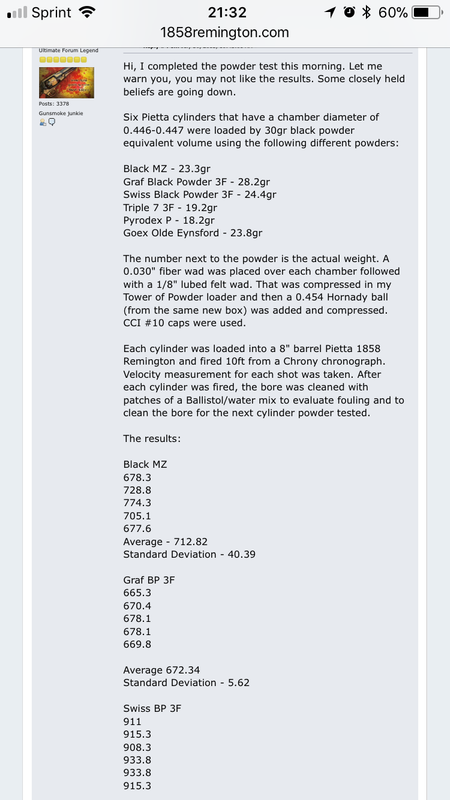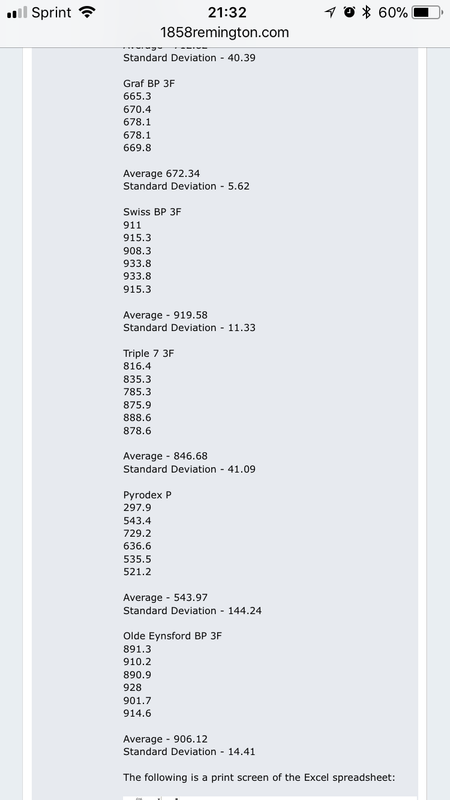arcticap
54 Cal.
The Remington's cylinder pin does need to be lubed more frequently compared to the Colt, after every 2-3-4 cylinders fired depending on the size of powder charges.
But that's easy to do since the captive pin pulls out in seconds for a quick wipe, apply some lube with a cotton swab, and wipe the face of the cylinder.
If the cylinder is removed for loading off the frame anyway then it becomes part of the loading routine.
The American Pioneer 3F Powder and 777 is generally easier to clean with water, and doesn't contain sulfur.
Other powders made by American Pioneer are Shockey's Gold and Black MZ which is only available from the Sportsman's Warehouse on clearance for $9.99 per pound while it lasts.
Even though the Black MZ is a very coarse 2F powder, it doesn't foul very much with folks giving favorable reports.
777 generally uses 10% reduced loads.
But they shouldn't be allowed to absorb moisture from humid air.
These substitute powder residues still need to be cleaned promptly or they can absorb moisture, but they usually aren't quite as harmful to the metal if cleaned thoroughly.and promptly.
Also keep the guns and fouling well lubed after use until they're cleaned for additional protection.
Which powder to choose is based on personal preference and experimentation since they all have their advantages and disadvantages.
But that's easy to do since the captive pin pulls out in seconds for a quick wipe, apply some lube with a cotton swab, and wipe the face of the cylinder.
If the cylinder is removed for loading off the frame anyway then it becomes part of the loading routine.
The American Pioneer 3F Powder and 777 is generally easier to clean with water, and doesn't contain sulfur.
Other powders made by American Pioneer are Shockey's Gold and Black MZ which is only available from the Sportsman's Warehouse on clearance for $9.99 per pound while it lasts.
Even though the Black MZ is a very coarse 2F powder, it doesn't foul very much with folks giving favorable reports.
777 generally uses 10% reduced loads.
But they shouldn't be allowed to absorb moisture from humid air.
These substitute powder residues still need to be cleaned promptly or they can absorb moisture, but they usually aren't quite as harmful to the metal if cleaned thoroughly.and promptly.
Also keep the guns and fouling well lubed after use until they're cleaned for additional protection.
Which powder to choose is based on personal preference and experimentation since they all have their advantages and disadvantages.
Last edited:






